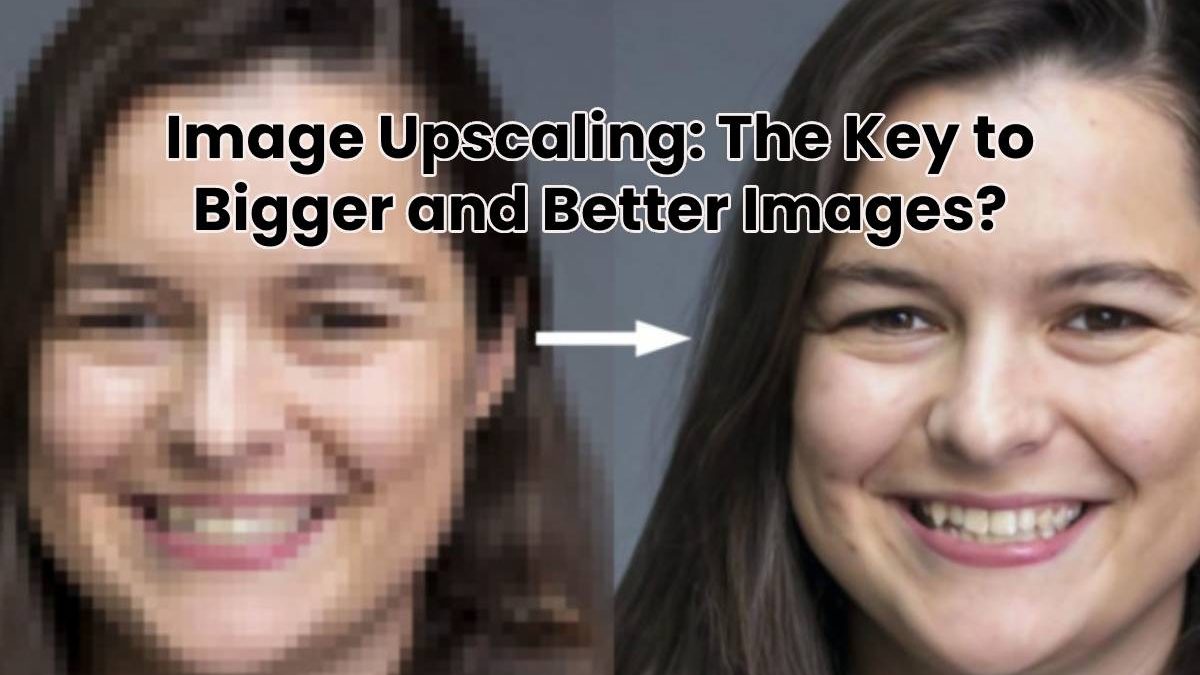Image Upscaling: The Key to Bigger and Better Images?
Table of Contents
Introduction
Compressing images may be annoying, but trying to enlarge a low quality image is a pain that is on a different level altogether! Images are essential for promotional purposes, and they have become almost a basic need in any business! People find it easier to trust visual content more than loads of text, which brings into focus the importance of bigger and better images! Tool for upscale image are perfect for the job, as many many cameras can only take normal size photos that would otherwise not fit on big billboards! But what are image upscalers? Why are they necessary when enlarging images? Make sure you read this article to the very end and find out the answers to these questions!
What is Image Upscaling?
If you have been in a situation where you needed to enlarge or upscale a low resolution image, then you probably ended up with a blurry and distorted image. This was likely the case because low-resolution images have fewer pixels, making them unable to reproduce all the fine details present in the original image. Image Upscalers optimize images and make them more visually appealing by increasing their resolution. But what exactly is upscaling you ask? Image upscaling simply refers to the conversion of lower resolution media, such as photos and images to a higher resolution. Image upscalers give to images what prescription glasses give to the user: sharp focus! Once images and videos are upscaled, it means that they can be seen clearer than before, bringing out details which are appealing to anyone who views them.
Before we go into the nooks and crannies of what image upscalers are, and how they work, let us consider a bit why image upscaling is necessary. A short trip down memory lane reveals that TVs in the 1990s used to use standard definition video of only 480 pixels high. When high-definition TV entered the scene, they took it a notch higher to 720 or 1080 pixels, which is the most popular resolution format for content on TV and media that we interact with on the internet. With more than a third of households using a 4K TV, many viewers are treated to 4K-mastered content. However, when they are watching lower quality content, streaming devices have to do a lot of upscaling for video and images to fit the full screen display. The result? Images and video are stretched to crazy extents, compromising on quality, sharpness and resolution!
What is an Image Upscaler?
Image upscalers attempt to solve this problem by copying pixels from the lower resolution image and repeating them to fill out all the pixels of the higher resolution display. The image is then subjected to filters which smoothen the image and iron out any ragged edges resulting from the stretching. The final image can now fit on a 4K display, but may still be a bit blurred! This is where AI image upscalers take it to the next level.
AI Image Upscaling
AI image upscalers do not start with a low resolution image and stretch it to improve its visual quality at higher resolutions. Instead, they employ a deep learning model which predicts how a high-resolution image would look, if it was downscaled to look like the original low resolution image. These neural network models are fed with an infinite number of images, which make it easy for them to produce accurate results. Hence they come up with predictions that are high resolution, sharper, better focused and with sufficient detail. Think of hair looking scruffier, trees with very distinct leaves and faces with fine wrinkles and freckles. Amazing, don’t you agree?
How to Increase Image Resolution
Most images we find ourselves having to use are normally taken by regular people’s cameras and tend not to be professional. Many businesses use this content for social media purposes and have to part with increasing photo resolution so that they can be more visually appealing to the public. Bigger and more realistic images attract more attention, and AI image upscalers come in handy towards this end. With just a few clicks, AI image upscalers can enable you to develop and use fine images of the right size without having to gamble with visibility, detail and sharpness! But how?
Well, it is as easy as uploading the image you want to upscale or enlarge which can be conveniently saved locally in your computer or mobile phone. Next you have to pick your desired format, whether it be JPEG, JPG, or PNG. This will depend on your preference for your desired outcome. All you have to do after this is set up your scaling options and sit tight as the software does its bit! Some AI image upscalers can be set to the tune of four (4X) which means that the result is going to be four times better! What will surprise you even more is how affordable some of these image upscalers can be. Even the most reliable and effective image upscalers will convert your low-resolution images into higher ones, at almost no cost! Some will even go so far as to offer you free upscaling services for the first ten images, and a fair deal when you want to upscale more images!
Conclusion
There is no denying how tremendous AI is stepping up the technology used in digital imagery and art. You no longer have to manually stretch images and videos to fit your display. Image upscalers do the job for you flawlessly and still maintain the quality, sharpness and detail that made you choose your image in the first place. It definitely cannot get better than that!

